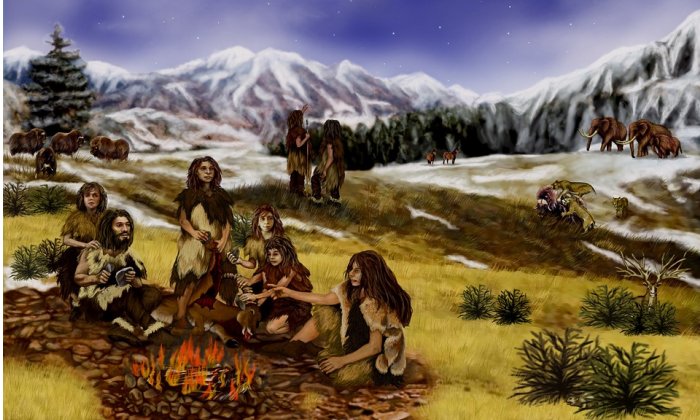Conny Waters – MessageToEagle.com – Hunter-gathers caused ecosystems to change 125,000 years ago. These are the findings of an interdisciplinary study by archeologists from Leiden University in collaboration with other researchers.
Neanderthals used fire to keep the landscape open and thus had a big impact on their local environment.
Image credit: Pixabay
“Archeologists have long been asking questions about the character and temporal depth of human intervention in our planet’s ecosystems. We are increasingly seeing very early, generally weak signs of this,” says Wil Roebroeks, Archeology professor at Leiden University.
These signs proved much stronger in research at a lignite quarry near Halle in Germany. Archeological research has been carried out at this quarry, Neumark-Nord, in the last few decades, and alongside a huge amount of data about the early environment, abundant traces of Neanderthal activities have been found. “Among other things, we found the remains of hundreds of slaughtered animals, surrounded by numerous stone tools and a huge amount of charcoal remains.”
Open for 2,000 years
The traces were found in what 125,000 years ago was a forest area where not only prey such as horses, deer and cattle, but also elephants, lions and hyenas lived. This mixed deciduous forest stretched from the Netherlands to Poland. In several places in the area were lakes, and on the edges of some of these, traces of Neanderthals have been found, Roebroeks explains. At the point in time when these Neanderthals turned up there, the closed forest made way for large open spaces, in part due to fires.
“The question is, of course, whether it became open because of the arrival of hominins, or whether hominins came because it was open? However, we have found sufficient evidence to conclude that hunter-gatherers kept the area open for at least 2,000 years.” Comparative research conducted by Leiden paleobotanist Professor Corrie Bakels has shown that at similar lakes in the area, where the same animals roamed, but where there are no traces of Neanderthals, the dense forest vegetation remained largely intact.
Until now it was generally thought that it was only when humans took up agriculture about 10,000 years ago that they began to shape their environment, for instance by cutting down trees to create fields. But many archeologists believe it started much sooner, on a smaller scale, and according to Roebroeks, Neumark-Nord is the earliest example of such intervention.
The new research findings are not only important for archeology, says Roebroeks, but also for disciplines involved in nature restoration, for instance. “It also adds something to the behavioral spectrum of early hunter-gatherers. They weren’t simply ‘primal hippies’ who roamed the landscape picking fruit here and hunting animals there. They helped shape their landscape.”
Major impact of fire
A previous study by Roebroeks and his research team showed that knowledge about fire was already being passed down by hominins at least 400,000 years ago. “We shouldn’t be surprised if in future research we find traces that indicate that hominins had a major impact on their environment much earlier, on a local scale at least.”
The study will be published in the journal Science Advances on 15 December.
Written by Conny Waters – MessageToEagle.com – AncientPages.com Staff Writer







